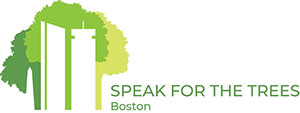What trees are in your neighborhood? What stories do they have to tell?
Over 6 weeks in summer of 2020, 15 Boston teens explored the history, the present, and the future of 5 community forests in Boston: North Dorchester, South Dorchester, Hyde Park, West Roxbury, and Roslindale.
Below are their stories:
Advocating for Green: North Dorchester
This video, created by Rose Bottorf, Jason Senecharles, and Anna Wilcox, teaches Boston residents how to obtain trees on their street and how to request open space in their neighborhood. This video also serves to give context to and a better understanding of the current tree canopy in the northern area of Dorchester. You can also read their final North Dorchester report.
South Dorchester: Community and its Green Spaces and Trees
South Dorchester is a diverse community, but lacks a sufficient tree canopy compared to other neighborhoods. In order to promote equity and environmental justice across the city of Boston, we want to involve community residents in conversations to support their local urban forest. Follow the Instagram posts created by Angelica Pham, Anna Pham, and Emily Hughes. You can also read their final South Dorchester report.
Roslindale and Its Urban Trees
In the video below, Sammi Huang and Isabel present about the past, present, and future of Roslindale, a neighborhood in Boston, MA. Learn how ongoing construction will harm the size of the tree canopy and the health of residents in Roslindale. You can also read their final Roslindale report and watch their slideshow.
The Past, Present, and Future of Hyde Park’s Tree Canopy
Maya Hall, Ryan Martin, and Wilson Zheng explore the history of Hyde Park in the video below. Hyde Park stands true to its nickname as a small town in a big city since it is made up of mostly suburban areas. This helps to explain why it is predominantly a well forested neighborhood with green spaces including the Stony Brook Reservation and Neponset River. However, this does not mean that we do not have room to improve and grow. Due to current events such as the coronavirus pandemic and the BLM movement, environmental injustice has continued to rise as a result of this. Black, low-income, and population-dense communities like Readville and along Hyde Park Avenue are particularly affected by these issues. Without the benefits of a substantial tree canopy, many African-American residents continue to live without shade and filtered air. If this doesn’t seem like the future you imagined, it is all up to Hyde Park’s residents to help maintain and advocate for a greener environment. You can also read their final Hyde Park report.
The Trees of West Roxbury
With the neighborhood’s tree lined streets & plentiful green spaces, West Roxbury & its residents continue to benefit from its mature urban forest. Maggie Myslik, Maggie Olson, and Alejandro Velez created a 4-page infographic that explores the past, present, and future of this West Roxbury’s trees. You can also read their West Roxbury final report.
